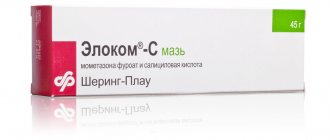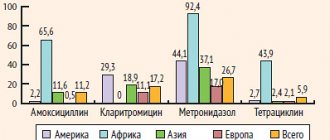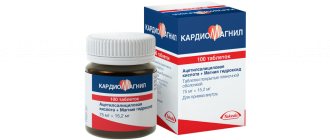Furosemide dosage
The dosages of furosemide for specific pathologies will be presented below. This will help you write a prescription for furosemide more correctly.
For hypertension
When prescribing furosemide in patients with arterial hypertension, the following recommendations must be adhered to:
- can be prescribed in two forms intravenously or orally;
- it is necessary to start with small doses of 20 - 40 mg twice a day;
- it is necessary to gradually increase the dosage in the future to achieve the desired effect;
- the daily dose in this case is no more than 320 mg per day.
Therefore, it is advisable to first write a prescription for furosemide at a dosage of 20 or 40 mg 1 - 2 times a day, and then increase the dose to achieve the desired effect. You can see examples below.
For swelling
When prescribing furosemide to patients with edema, the following rules must be followed:
- Furosemide is prescribed for edema parenterally or orally;
- you need to start taking the drug with small doses of 20 - 80 mg per day in the morning;
- then it is necessary to increase the dose every 8 hours until the desired effect is achieved;
- The maximum dose per day can be no more than 600 mg.
Therefore, it is advisable to write a prescription for furosemide at a dosage of 20–80 mg per day orally, and then increase the dose every 8 hours until the desired effect is achieved. You can see examples below.
In pediatrics, for edema, 0.5 - 2 mg per kg body weight orally or parenterally every 6 - 12 hours (maximum 6 mg per kg per administration). Intravenous drip of 0.05 mg per kg, increasing the dose until the desired result is achieved.
For pulmonary edema
Furosemide is indicated for pulmonary edema at a dose of 40 mg intravenously over 20 minutes, then this dose can be repeated within 1 hour of treatment.
More often, this condition is treated in a hospital, so there is no need to write out a prescription for furosemide, but examples are given below.
For renal failure
When prescribed to patients with renal failure, it is necessary:
- prescribe the patient furosemide orally at a dosage of 80 - 2500 mg per day, frequency of administration 1 - 4;
- or intravenously 40 - 1000 mg per day, in which case the frequency will be 1 - 8 doses;
- large doses are administered slowly over 30 minutes.
Therefore, it is advisable to write a prescription for furosemide orally at a dose of 80–2500 mg per day in 1–4 doses.
Furosemide, 40 mg, tablets, 20 pcs.
When used simultaneously with phenobarbital and phenytoin, the effect of furosemide is reduced.
Increases the concentration and risk of developing nephro- and ototoxic effects of cephalosporins, chloramphenicol, ethacrynic acid, cisplatin, amphotericin B (due to competitive renal excretion).
With the simultaneous use of aminoglycosides with furosemide, the elimination of aminoglycosides is slowed down and the risk of developing their ototoxic and nephrotoxic effects increases. For this reason, the use of this combination of drugs should be avoided unless it is necessary for health reasons, in which case an adjustment (reduction) of maintenance doses of aminoglycosides is required.
Increases the effectiveness of diazoxide and theophylline, reduces the effectiveness of hypoglycemic agents, allopurinol.
Drugs that block tubular secretion increase the concentration of furosemide in the blood serum. Medicines with nephrotoxic effects - when combined with furosemide, the risk of developing nephrotoxic effects increases.
GCS and carbenoxolone when combined with furosemide increase the risk of hypokalemia.
When used simultaneously with cardiac glycosides, the risk of developing digitalis intoxication increases against the background of water and electrolyte disturbances (hypokalemia or hypomagnesemia).
Strengthens the neuromuscular blockade of depolarizing muscle relaxants (suxamethonium) and weakens the effect of non-depolarizing muscle relaxants (tubocurarine).
NSAIDs (including indomethacin and acetylsalicylic acid) in combination with furosemide may cause a temporary decrease in creatinine clearance and an increase in serum potassium and reduce the diuretic and antihypertensive effects of furosemide. In patients with hypovolemia and dehydration (including while taking furosemide), NSAIDs can cause the development of acute renal failure. Furosemide may enhance the toxic effect of salicylates (due to competitive renal excretion).
Sucralfate reduces the absorption of furosemide and weakens its effect (these drugs should be taken at least 2 hours apart).
Combined use with carbamazepine may increase the risk of hyponartaemia.
Antihypertensive drugs, diuretics or other agents that can lower blood pressure, when combined with furosemide, may lead to a more pronounced antihypertensive effect.
Prescribing ACE inhibitors to patients previously treated with furosemide can lead to an excessive decrease in blood pressure with deterioration of renal function, and in some cases to the development of acute renal failure, therefore, three days before starting treatment with ACE inhibitors or increasing their dose, it is recommended to discontinue furosemide, or reducing its dose.
Probenecid, methotrexate and other drugs, which, like furosemide, are secreted in the renal tubules, can reduce the effect of furosemide (the same route of renal secretion), on the other hand, furosemide can lead to a decrease in the renal excretion of these drugs.
Lithium salts - under the influence of furosemide, the excretion of lithium is reduced, thereby increasing the serum concentration of lithium and increasing the risk of developing the toxic effects of lithium, including its damaging effects on the heart and nervous system. Therefore, monitoring of serum lithium concentrations is required when using this combination.
Concomitant use of cyclosporine A and furosemide increases the risk of developing gouty arthritis due to hyperuricemia caused by furosemide and disruption of urate excretion by cyclosporine at night.
Pressor amines (epinephrine, norepinephrine) and furosemide mutually reduce effectiveness.
Radiocontrast agents—Patients at high risk of developing contrast agent nephropathy who received furosemide had a higher incidence of renal dysfunction compared with patients at high risk of developing contrast agent nephropathy who received only intravenous hydration before administration of radiocontrast agent.
FUROSEMIDE SOPHARMA
Interaction
When used simultaneously with phenobarbital and phenytoin, the effect of furosemide is reduced.
Increases the concentration and risk of developing nephro- and ototoxic effects of cephalosporins, cisplatin, amphotericin B (due to competitive renal excretion).
With the simultaneous use of aminoglycosides with furosemide, the elimination of aminoglycosides is slowed down and the risk of developing their ototoxic and nephrotoxic effects increases. For this reason, the use of this combination of drugs should be avoided unless it is necessary for health reasons, in which case an adjustment (reduction) of doses of aminoglycosides is required.
Increases the effectiveness of diazoxide and theophylline, reduces the effectiveness of hypoglycemic agents (oral antidiabetic agents, insulin), allopurinol. Medicines with nephrotoxic effects - when combined with furosemide, the risk of developing nephrotoxic effects increases. Glucocorticosteroids, corticotropin and amphotericin B lead to potassium loss. When combined with furosemide, this may result in a severe decrease in plasma potassium levels. Carbenoxolone, liquoris, beta2-sympathomimetics in high doses, long-term use of laxatives, reboxetine may increase the risk of developing hypokalemia.
When used simultaneously with cardiac glycosides, the risk of developing digitalis intoxication increases against the background of water and electrolyte disturbances (hypokalemia or hypomagnesemia), causing long QT interval syndrome.
Strengthens the neuromuscular blockade of depolarizing muscle relaxants (suxamethonium) and weakens the effect of non-depolarizing muscle relaxants (tubocurarine).
Nonsteroidal anti-inflammatory drugs (NSAIDs) (including indomethadine and acetylsalicylic acid) in combination with furosemide may cause a transient decrease in creatinine clearance and an increase in serum potassium and reduce the diuretic and antihypertensive effects of furosemide. In patients with hypovolemia and dehydration (including while taking furosemide), NSAIDs can cause the development of acute renal failure. Furosemide may enhance the toxic effect of salicylates (due to competitive renal excretion).
Sucralfate reduces the absorption of furosemide and weakens its effect (these drugs should be taken at least 2 hours apart).
Combined use with carbamazepine may increase the risk of hyponatremia, and with corticosteroids, on the contrary, it may cause sodium retention. Antihypertensives, diuretics or other agents that can lower blood pressure, when combined with furosemide, can lead to a more pronounced antihypertensive effect.
Prescribing angiotensin-converting enzyme (ACE) inhibitors or angiotensin II receptor antagonists to patients previously treated with furosemide may lead to an excessive decrease in blood pressure with deterioration of renal function, and in some cases to the development of acute renal failure, so three days before starting treatment with inhibitors ACE inhibitors or angiotensin II receptor antagonists, or increasing their dose, it is recommended to discontinue furosemide or reduce its dose.
Probenecid, methotrexate and other drugs, which, like furosemide, are secreted in the renal tubules, can reduce the effect of furosemide (the same route of renal secretion); on the other hand, furosemide can lead to a decrease in the excretion of these drugs by the kidneys. Concomitant use with metolazone (thiazide diuretic) may cause increased diuresis.
Lithium salts - under the influence of furosemide, the excretion of lithium decreases, thereby increasing the serum concentration of lithium and increasing the risk of developing its toxic effects, including damaging effects on the heart and nervous system. Therefore, monitoring of serum lithium concentrations is required when using this combination.
Concomitant use of cyclosporine A and furosemide increases the risk of developing gouty arthritis due to hyperuricemia caused by furosemide and the impairment of urate excretion by the kidneys by cyclosporine.
Pressor amines (epinephrine, norepinephrine) and furosemide mutually reduce effectiveness.
Radiocontrast agents—Patients at high risk of developing contrast agent nephropathy who received furosemide had a higher incidence of renal dysfunction compared with patients at high risk of developing contrast agent nephropathy who received only intravenous hydration before administration of radiocontrast agent.
The use of diuretics is considered potentially dangerous when used concomitantly with risperidone. In placebo-controlled trials with risperidone in elderly patients with dementia, higher mortality was observed in patients treated with both furosemide and risperidone compared with patients treated with furosemide or risperidone alone, therefore special caution is required when furosemide is used concomitantly with risperidone in such patients.
As a combination or concomitant treatment, such therapy can only be used after assessing the benefit/risk ratio.
There are no reports of increased mortality among patients taking other diuretics (mostly low-dose thiazide diuretics) as concomitant treatment with risperidone.
Patients prescribed cholestyramine. This drug should be taken at least 1 hour after taking furosemide.








